Did you know that companion planting can greatly improve the health and productivity of your squash plants? By strategically selecting plants that work well together, you can enhance the growth of your squash vines and deter pests, resulting in a flourishing garden. In this article, I will share my top picks for squash companion plants that will help you achieve a thriving and bountiful harvest.
When it comes to squash companion planting, there are several factors to consider. Some plants provide shade, others fix nitrogen in the soil, while some act as natural pest deterrents. By understanding the benefits each companion plant offers, you can create a symbiotic environment that nurtures your squash plants.
Are you ready to discover the best companion plants for squash? Let’s dive in!
Key Takeaways:
- Companion planting with squash can enhance plant growth and deter pests.
- Corn, pole beans, sunflowers, marjoram, dill, radishes, mint, borage, and garlic are excellent companion plants for squash.
- Each companion plant provides unique benefits such as shade, nitrogen fixation, pest control, and increased pollinator activity.
- Consider using the Three Sisters method that combines corn, beans, and squash for optimal results.
- Companion planting creates a harmonious ecosystem that benefits all plants involved.
The Three Sisters: Corn as a Squash Companion Plant
The Three Sisters method, developed by Native American tribes, is a traditional intercropping technique that involves planting corn, beans, and squash together in the same growing area. This ancient agricultural practice promotes a harmonious relationship between these three crops, creating a sustainable and mutually beneficial ecosystem.
Corn, as the tallest of the three sisters, provides shade for the squash plants, protecting them from excessive sunlight and reducing weed growth. In return, the sprawling squash plants act as a living mulch, covering the soil and suppressing weed growth around the corn roots, conserving moisture, and maintaining soil temperature. This interplanting technique maximizes the use of available space and resources in the garden.
While winter squash varieties are commonly grown alongside corn, such as butternut, acorn, or Hubbard squash, summer squash, like zucchini or yellow crookneck, can also be interplanted with corn. The dense foliage of squash plants helps to deter pests and shade the ground, preventing soil erosion and maintaining moisture levels.
Another key element of the Three Sisters method is the inclusion of beans, which are nitrogen-fixing legumes. Beans have the ability to convert atmospheric nitrogen into a plant-available form, enriching the soil with this essential nutrient. By growing beans near corn and squash, gardeners can enhance the overall fertility of the soil, promoting healthier growth and higher yields for all three crops.
The Three Sisters method is not only a practical way to maximize garden space but also a homage to the interdependence and interconnectedness of plants in nature. By imitating this traditional method, we can create a thriving and sustainable garden ecosystem.
Want to visualize the Three Sisters planting method? Check out this table summarizing the key features of corn as a squash companion plant:
| Corn as a Squash Companion Plant | |
|---|---|
| Benefits | Considerations |
| Provides shade for squash plants | Choose appropriate corn varieties based on the available space and time to maturity |
| Squash leaves act as living mulch, suppressing weeds and conserving moisture | Ensure proper spacing between corn and squash plants to prevent competition for nutrients |
| Beans fix nitrogen, enhancing soil fertility | Monitor for potential pest and disease issues specific to corn, squash, and beans |
To get a better visual understanding of the Three Sisters method, take a look at this image:
With the Three Sisters technique, you can create an efficient and sustainable system in your garden, fostering the growth and success of corn, beans, and squash. This companion planting approach not only adds diversity to your garden but also provides multiple benefits for these crops, promoting a healthy and productive harvest.
Pole Beans: Nitrogen-Fixing Companions for Squash
Pole beans, a vital part of the Three Sisters method, are excellent companion plants for squash. Not only do they provide numerous benefits, but they also enhance the overall health of your garden. These nitrogen-fixing legumes can improve soil quality and increase nitrogen levels, promoting robust growth in neighboring squash plants.
By harnessing the power of nitrogen fixation, pole beans help replenish the soil with essential nutrients. As the beans draw nitrogen from the air, they convert it into a form that is easily accessible to plants, benefiting the surrounding vegetation, including squash.
Another advantage of growing pole beans alongside squash is the efficient utilization of space. Both pole beans and climbing squash plants require vertical support, and they can share the same trellising system. This saves valuable garden space and allows you to maximize your yield.
When planning your garden layout, consider placing the trellis in a way that provides adequate sunlight and airflow for both the pole beans and the squash plants. This ensures optimal growth and helps prevent disease and pest issues.
Benefits of Growing Pole Beans with Squash:
- Improved soil quality through nitrogen fixation
- Increased nitrogen levels, promoting healthy growth
- Maximized space utilization with shared trellising system
In summary, interplanting pole beans with squash is a smart gardening strategy. Not only do the pole beans enhance soil fertility, but they also optimize space utilization with a shared trellising system. Incorporating these nitrogen-fixing legumes into your squash companion planting will contribute to a thriving and bountiful garden.
Sunflowers: Shade and Pollinator Support for Squash
When it comes to companion plants for squash, sunflowers are an excellent choice. Not only do they add a vibrant splash of color to your garden, but they also provide multiple benefits to your squash plants.
First and foremost, sunflowers offer much-needed shade for squash plants during hot summer days. This shade helps prevent the soil from drying out quickly and reduces water stress on the squash vines. Additionally, the shade provided by sunflowers can help protect squash fruits from scorching sunburn.
But that’s not all! Sunflowers can also serve as trellises for smaller squash varieties that have a climbing habit. By utilizing the strong and sturdy stems of sunflowers, you can train the squash vines to grow vertically, saving precious garden space and ensuring proper airflow around the plants.
Furthermore, sunflowers are known for their ability to attract pollinators, including bees and butterflies. These pollinators play a crucial role in ensuring optimal fruit set and development in your squash plants. With the help of sunflowers, you can create a pollinator-friendly environment in your garden and maximize your squash harvest.
To summarize, planting sunflowers alongside your squash not only provides shade and trellising support but also attracts pollinators for better fruit production. It’s a win-win situation for both your squash plants and your overall garden ecosystem.
Marjoram: Pest Deterrent for Squash Bugs
When it comes to keeping your squash plants free from pests, marjoram is a reliable companion. Its aromatic leaves repel squash bugs and can help create a pest-free environment in your garden.
Marjoram (Origanum majorana) is an easy-to-grow herb that not only adds flavor to culinary dishes but also serves as a natural pest deterrent. The strong scent of marjoram confuses and repels squash bugs, making it an effective tool in controlling their population.
Placing marjoram near your squash plants can provide a protective barrier against these destructive pests. The close proximity of the marjoram plants to the squash creates an unfavorable environment for squash bugs, reducing the risk of infestation.
In addition to its pest-deterrent properties, marjoram also attracts beneficial insects such as parasitic wasps and predatory spiders, which can help control other garden pests. By introducing marjoram as a companion plant, you promote a healthier ecosystem in your garden.
To make the most of marjoram’s pest-deterrent abilities, consider interplanting it with your squash plants or creating a border around your squash bed. This way, you can maximize the benefits of marjoram companion planting.
| Benefits of Marjoram Companion Planting |
|---|
| Repels squash bugs |
| Attracts beneficial insects |
| Creates a protective barrier |
| Enhances garden biodiversity |
Dill: Pest Control and Pollinator Attraction
When it comes to companion planting, dill is a true superhero in the garden. Not only does it add a delightful aroma to your vegetable patch, but it also plays a crucial role in pest control and attracting pollinators.
Planting dill around your squash and other vegetables can work wonders for pest control. When grown near squash plants, dill has the remarkable ability to repel pesky squash bugs, those notorious invaders that often wreak havoc on squash vines. By naturally deterring these pests, dill helps keep your garden healthy and pest-free.
But that’s not all – dill has another superpower. It attracts a specific group of beneficial insects known as predatory wasps. These wasps are natural enemies of a wide range of garden pests, including harmful insects that pose a threat to your squash plants. By attracting predatory wasps, dill creates a natural pest control system that helps to control and manage the insect population in your garden.
Another reason why dill is a fantastic companion plant for squash is its ability to attract pollinators. Swallowtail butterflies, in particular, are fond of dill, and they rely on this herb as a host plant for their eggs. By planting dill near your squash, you’ll not only be boosting pollinator activity but also encouraging the presence of beautiful butterflies in your garden.
So, if you’re looking for a companion plant that offers both pest control and pollinator attraction, don’t overlook the power of dill. By planting dill alongside your squash and other vegetables, you’ll be creating a thriving ecosystem that contributes to a healthier and more productive garden.
| Dill: Pest Control and Pollinator Attraction | Benefits |
|---|---|
| Repels squash bugs | Keeps your garden healthy and pest-free |
| Attracts predatory wasps | Natural pest control system |
| Host plant for swallowtail butterflies | Boosts pollinator activity and butterfly presence |
Source: Squash Companion Planting Guide
Radishes: Effective Trap Crop for Squash Vine Borers
Interplanting radishes with squash serves as a clever strategy to optimize garden space while naturally addressing the issue of squash vine borers. As a radish enthusiast, I have discovered the incredible benefits of using radishes as a companion plant for squash.
Radishes are not just a delightful addition to salads, but their underground growth habit also makes them a perfect fit for interplanting with squash. By taking advantage of the empty soil beneath the sprawling squash vines, radishes pack a double punch in your garden. Not only do they provide a harvest of fresh and crisp veggies, but they also act as a trap crop for flea beetles, diverting their attention away from your vulnerable squash plants.
Trap crops are an effective method of pest control wherein certain plants are grown to attract and divert pests away from the main crop. In the case of squash vine borers, radishes act as an enticing decoy. These voracious borers are attracted to the radish plants, which they mistake as suitable hosts. By targeting the radishes, the squash vine borers are effectively lured away from your precious squash plants, reducing the risk of infestation and damage to your crop.
Not only does interplanting radishes help control squash vine borers, it also offers an added bonus – a bountiful harvest of radishes. These vibrant root vegetables are quick-growing and can be ready for harvest within a few weeks. With their crunchy texture and peppery flavor, radishes make a delicious addition to salads, pickles, and even as a topping for tacos and sandwiches.
So, if you’re looking for an effective trap crop to manage squash vine borers and enjoy a tasty harvest of radishes, interplanting radishes with squash is a fantastic option. Not only will you benefit from healthier squash plants, but also from the satisfaction of growing your own fresh and flavorful radishes.
Mint: Pest Repellent for Squash Plants
When it comes to protecting your squash plants from pests, mint can be a valuable companion. Not only does it repel insects like flea beetles and squash bugs, but its fresh fragrance also acts as a deterrent for deer and rodents.
To take advantage of mint’s pest-repellent properties, I recommend growing it in your garden as a companion plant for squash. Placing mint near your squash vines can create a natural barrier that keeps these unwanted critters at bay.
However, it’s important to note that mint has a tendency to spread aggressively, taking over the garden if left unchecked. To contain its growth, it’s best to grow mint in pots or install barriers in the soil to restrict its root system.
Here are some key benefits of using mint as a pest repellent for squash plants:
“Mint is a fantastic companion plant for squash as it helps to keep pests away. Its aromatic properties not only deter insects but also act as a natural deterrent for deer and rodents.”
Mint: Pest Repellent and Deer Deterrent
By planting mint alongside your squash plants, you can enjoy the following advantages:
- Mint repels insects such as flea beetles and squash bugs, protecting your squash plants from damage.
- The fresh fragrance of mint serves as a natural deer and rodent repellent, preventing them from feasting on your precious squash harvest.
- Growing mint in pots or using barriers helps control its aggressive growth, allowing you to enjoy the benefits without it taking over your garden.
Here is a table summarizing the benefits of using mint as a companion plant for squash:
| Benefits of Mint as a Companion Plant for Squash |
|---|
| Mint repels insects like flea beetles and squash bugs. |
| The fresh fragrance of mint acts as a natural deterrent for deer and rodents. |
| Growing mint in pots or using barriers controls its aggressive spread. |
Borage: Pollinator Attraction and Squash Boost
When it comes to promoting pollinator activity and boosting your squash harvest, borage is an exceptional companion plant choice. Bees absolutely adore the beautiful blue flowers of borage, making it a favorite among pollinators. By growing borage near your squash plants, you can attract more bees and ensure optimal pollination rates for your squash blossoms.
Not only does borage help with pollination, but its flowers and leaves are also edible, adding both color and flavor to your salads and garnishes. This versatile herb is a delightful addition to your garden, serving both aesthetic and culinary purposes.
Let’s take a closer look at the benefits of borage as a companion plant for your squash:
| Benefits of Borage | |
|---|---|
| Pollinator attraction | Borage flowers entice bees and other pollinators, increasing cross-pollination and improving the yield of your squash. |
| Squash harvest boost | With more pollinators visiting your garden, you can expect a higher number of well-formed squash fruits. |
| Edible flowers and leaves | Add a pop of color and delicate flavor to your culinary creations by incorporating borage flowers and leaves. |
Borage is an easy-to-grow herb that thrives in full sun and well-drained soil. It self-seeds readily, making it a low-maintenance addition to your garden. Keep in mind that borage can spread rapidly, so it’s best to contain it by planting it in a pot or specific area.
Tip: To maximize the benefits of borage, interplant it with your squash plants and other flowering companion plants. This creates a vibrant and diverse garden ecosystem that supports a wide range of beneficial insects and promotes overall plant health.
Garlic: Pest Repellent and Soil Enhancer
When it comes to companion planting for squash, garlic stands out as both a powerful pest repellent and a soil enhancer. Its pungent aroma wards off various pests, making it an invaluable addition to any squash garden. Additionally, garlic contributes to soil improvement when interplanted with vegetables.
Garlic has been used for centuries as a natural pest control method due to its strong scent. It repels pests like aphids, spider mites, and squash bugs, effectively protecting nearby squash plants from infestation. Its natural pest repellent properties make garlic an organic and environmentally friendly alternative to chemical pesticides.
But garlic doesn’t only benefit squash plants by repelling pests. It also enhances the soil in which squash grows. Garlic is known for its ability to deter harmful nematodes, microscopic worms that can damage plant roots. By reducing nematode populations, garlic promotes healthier root systems and overall plant vigor.
Furthermore, garlic contains sulfur compounds that can actively improve soil health. These compounds help increase the availability of essential nutrients, such as nitrogen and phosphorus, promoting the optimal growth of squash plants. By interplanting garlic in your vegetable garden, you create a nutrient-rich environment that supports the development of robust and productive squash vines.
| Benefits of Garlic as a Companion Plant for Squash |
|---|
| 1. Pest Repellent |
| 2. Soil Enhancer |
| 3. Natural Alternative to Pesticides |
| 4. Deters Harmful Nematodes |
| 5. Promotes Healthy Root Systems |
| 6. Enhances Soil Nutrient Availability |
Integrating garlic as a companion plant alongside squash not only protects the plants from pests but also enhances the quality of the soil they grow in. By harnessing the natural properties of garlic, you can create a thriving garden that promotes the growth and productivity of your squash plants.
Conclusion
Companion planting with squash is a fantastic way to enhance the growth and overall health of your garden, while also deterring pests. By carefully selecting the right companion plants, you can create a harmonious ecosystem that benefits all the plants involved. Whether you’re planting winter or summer squash, considering companion plants is a crucial aspect of organic gardening.
Squash companion planting offers numerous benefits. For example, planting corn as a companion to squash provides natural shade, which helps regulate soil moisture and temperature. Additionally, pole beans, another popular choice, contribute to the garden’s soil quality by fixing nitrogen. This natural nutrient booster benefits not only the squash but also the other plants in your garden.
Companion plants like sunflowers, marjoram, dill, radishes, mint, borage, and garlic offer valuable pest control benefits. They can repel insects such as squash bugs and flea beetles, reducing the chances of infestation. Furthermore, these plants attract pollinators like bees and butterflies, which are essential for a successful squash harvest. Organic gardening practices advocate for using companion plants as a natural and sustainable way to promote healthy growth and reduce the need for chemical pesticides.
So, whether you’re a seasoned gardener or a beginner, consider incorporating squash companion planting into your garden. The benefits are abundant: improved growth, pest deterrence, soil enhancement, and a more vibrant and productive garden overall. With the right companions by its side, your squash plants will thrive, and you’ll enjoy the fruits of your labor in a sustainable and organic way.


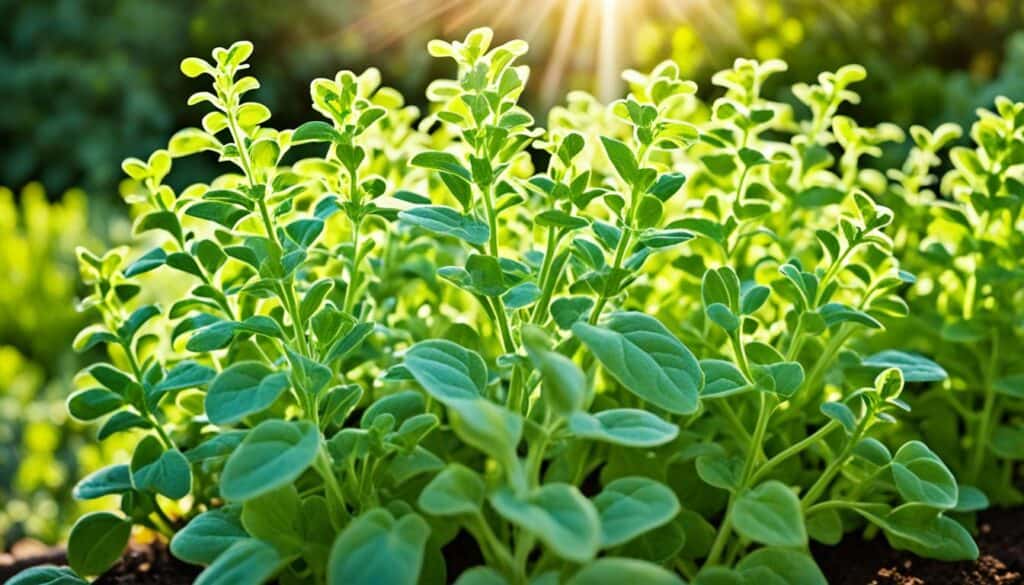
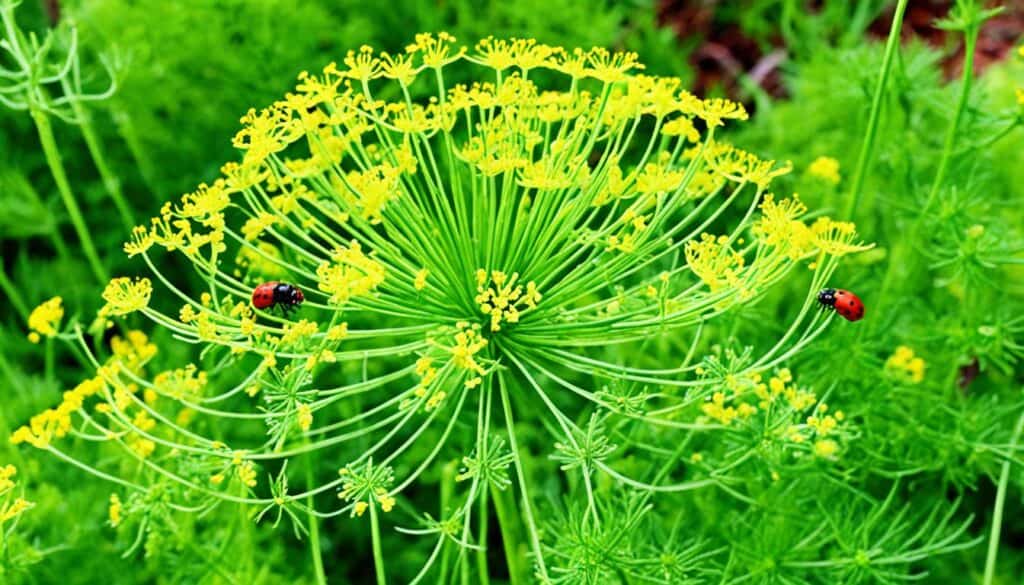
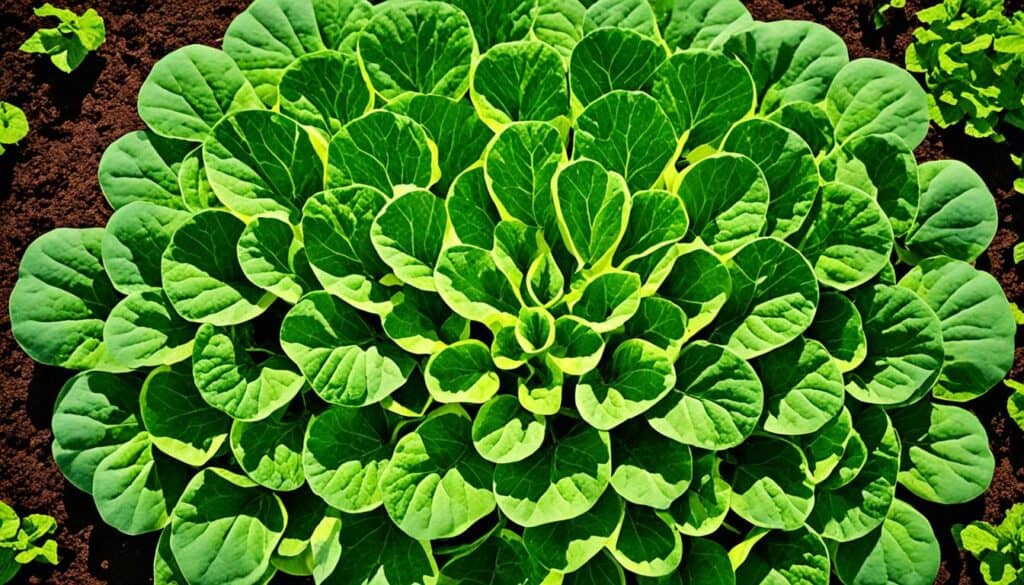
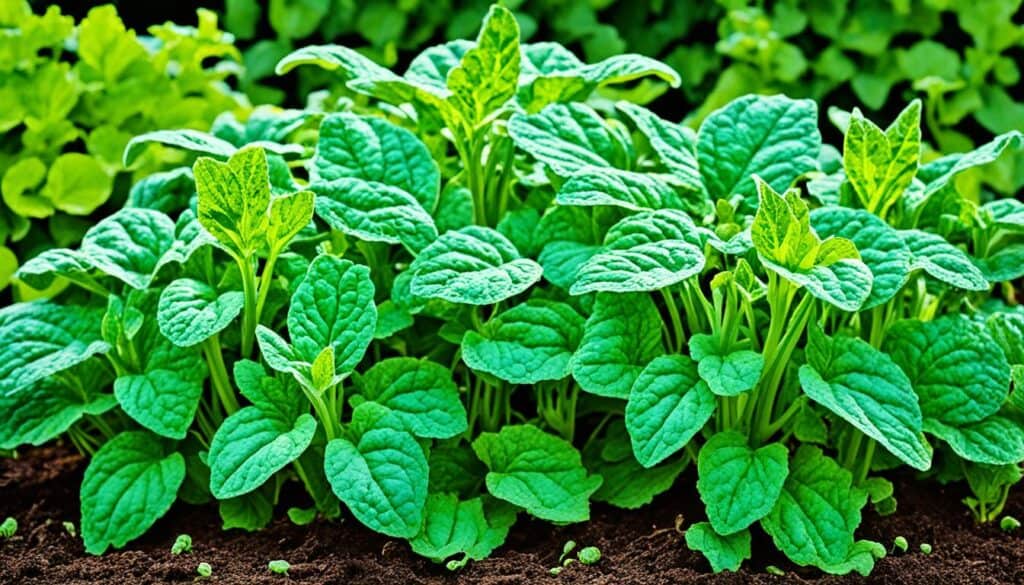
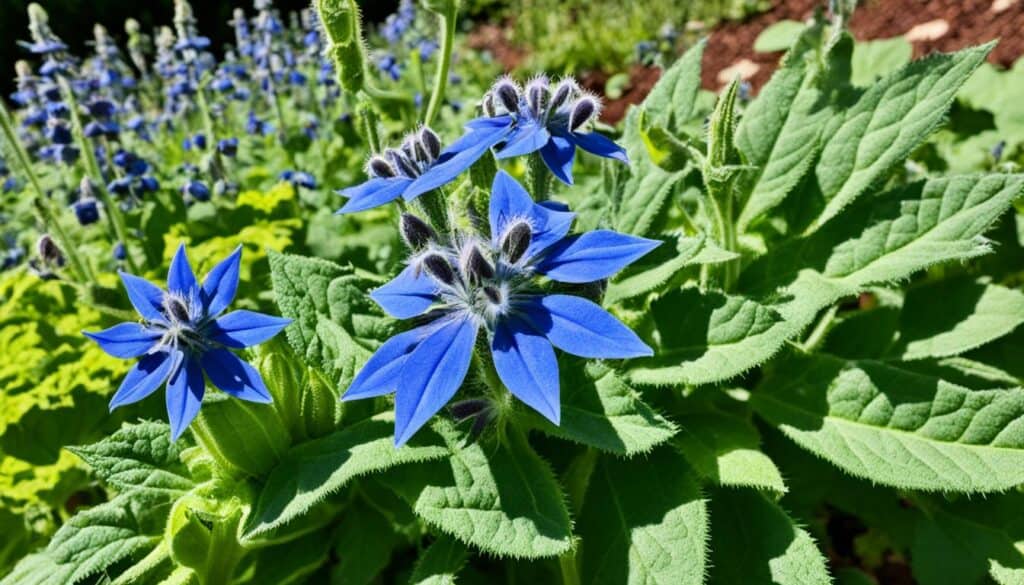



Leave a Reply